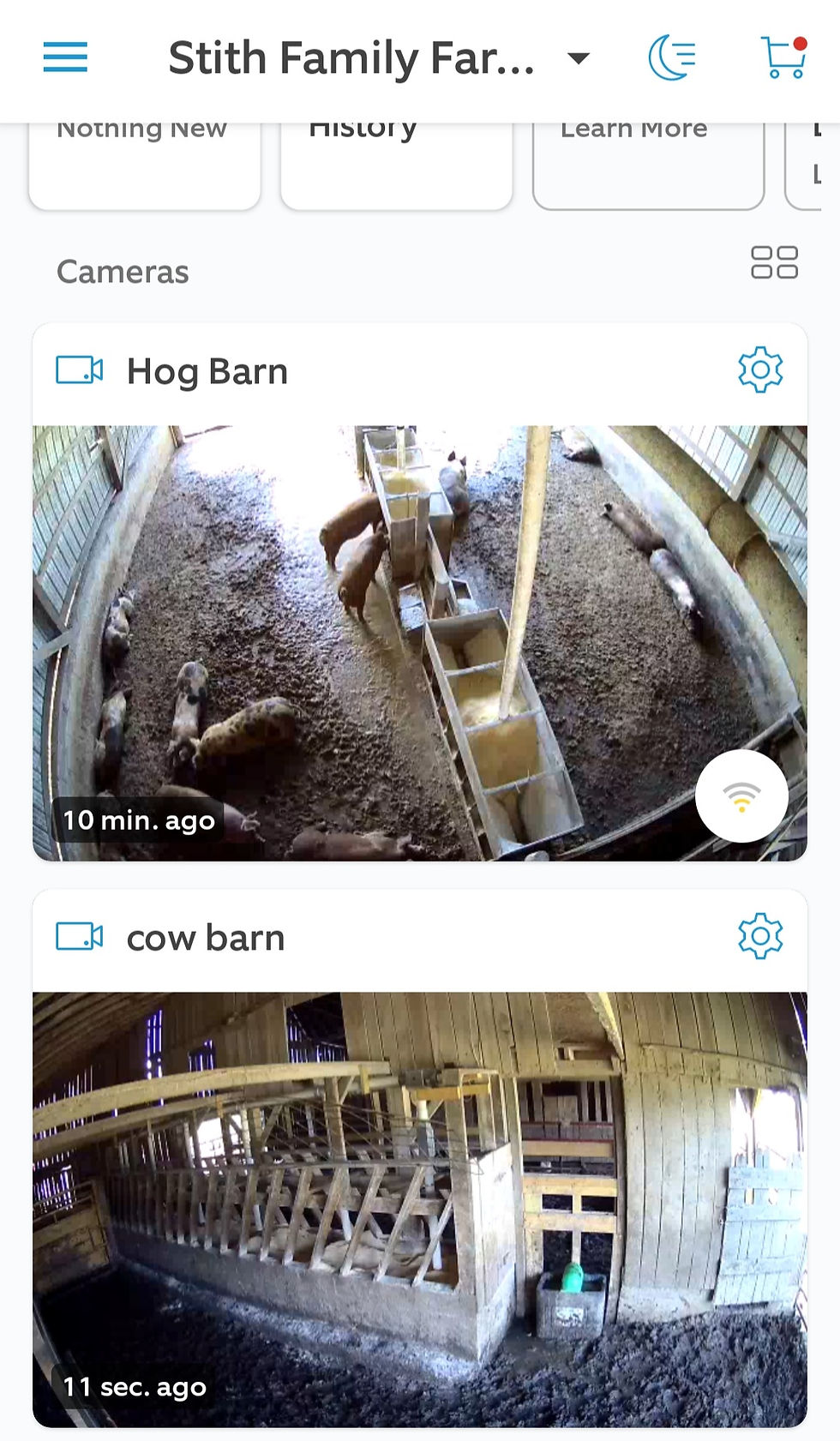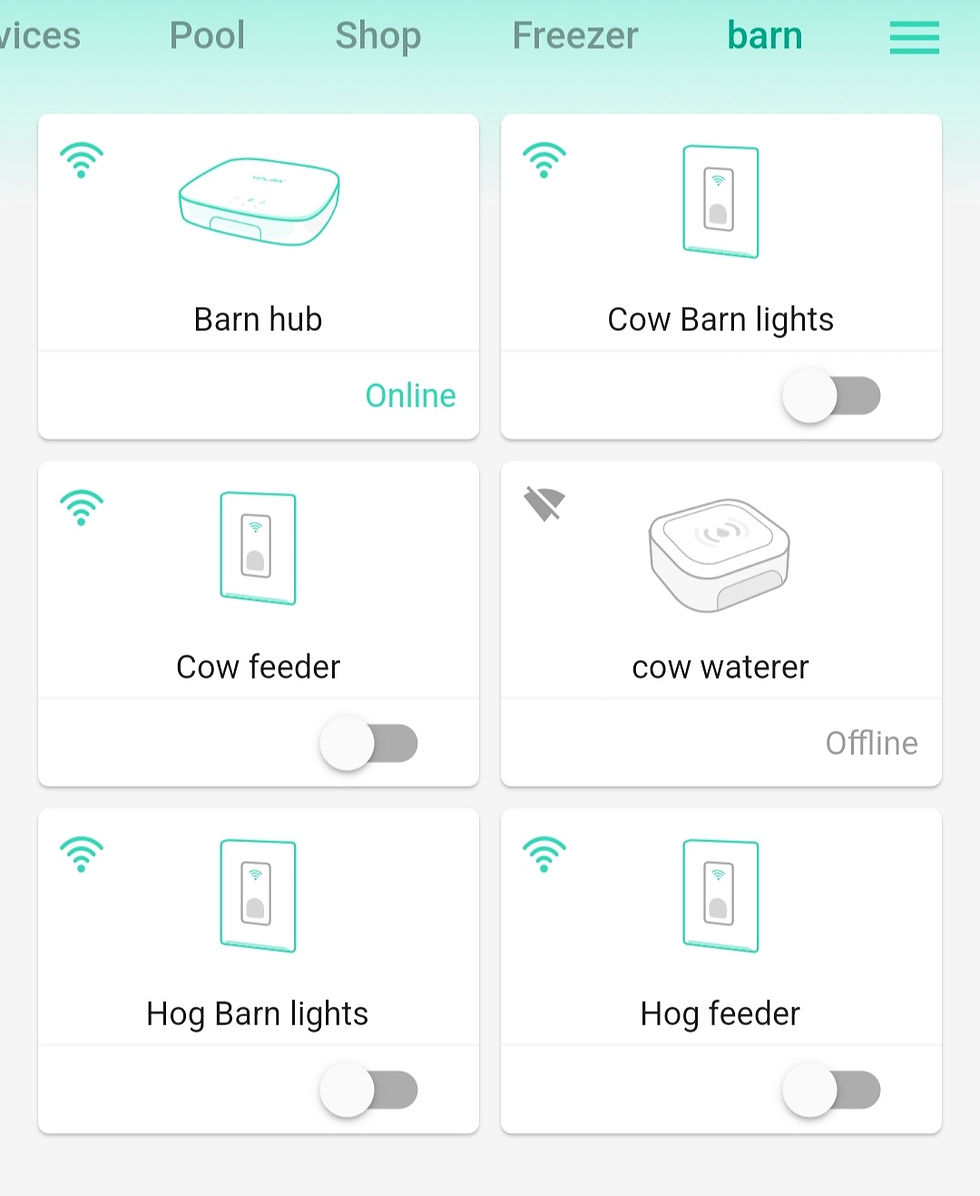Technology on the Farm
- Phillip Stith

- Sep 2, 2022
- 4 min read

For decades any animal feeding on the farm was done with shovels or buckets. The cattle use about 3,000 pounds of feed per week, which equates to feeding about 30 scoop shovels per day! The hogs use another 2,000 pounds of feed per week.
I've never been afraid of work, so when I decided to add automation and internet capable devices to the farm, physical work was not the primary motivation for seeking upgrades. The two biggest factors that went into the decision was off-farm work schedules and available time.
Some of our new subscribers may not realize that we all have full-time off farm jobs in addition to the duties of running the farm, getting your orders ready and scheduling pickups!
The two primary people responsible for the meat animals, feed production and meat orders are myself and Tim Padgett. Both of us work rotating shift schedules at Monument Chemical in Brandenburg.
The good part of shift work is that it affords more off days and chunks of time for farm duties than a traditional schedule. It also provides several different opportunities per week when one or the other of us are passing by our freezer location in Brandenburg on the way to or from work to facilitate pickups.
The bad part of shift work is that there are some days, especially in winter, when I don't even have an opportunity to see any of the animals in the daylight! Tim and I work slightly different schedules, so some days one of us is off and one working, some days we're both off and some days, which are the worst, we're both working and have very little time to get our farm work done.

After nearly a year of planning and building, I finally got our feed system online last week. The system consists of the following components:
1. I added Wi-Fi to the barn and installed cameras to the feeding areas that allow me to monitor what's happening from anywhere. I can use these cameras to monitor feed levels and make sure all of the animals are moving around okay and look healthy. I can also see the winter feeding area for the breeding animals during the day and be sure they have adequate hay, which used to be impossible if Tim and I were both working day shift!
2. I installed new feed bins and augers for both the beef cattle and hogs. Previously, I had to shovel the feed for the cattle every day and fill the hog feeder with a partial mixer batch every other day. This meant that the tractor had to stay hooked to the mixer all the time or be hooked and unhooked all the time during planting and haying seasons. I can now store over two weeks worth of each type of feed in the bulk bins and feed it on demand.
3. I installed app controlled switches for the lights at both barns, both feeders, and all waterers (which monitors the water levels and sends an alert if there is a problem). Now I can not only see our feeders from anywhere on camera, but I can schedule our feeders to run at a set time each day or turn them on any time from our phones. If it's dark and I get an alert, I can turn the lights on and see what's going on remotely!

With the new system in place, I have cut down feed mixing from 3-4 times per week to 1-2 days every other week. This saves about 3 hours per week of time. Not physically feeding the animals every day cuts out another 3.5 hours per week.
This time savings allows me to take on other projects around the farm and have a little more time for family activities, which is definitely welcomed!
The system has also been better for the animals. Their feeding schedule is more uniform and predictable. (In the past, when I switched shifts, so did they!) Any problems with an animal's health is likely to be noticed sooner with us looking in on them a few times a day, which will lead to better care.
In the summer, a waterer failure could be disastrous in only a few hours. While I looked at it every day, my schedule still takes me away for the farm for 13+ hours at a time some days. I feel a lot better knowing I'll get a notification on my phone if a waterer quits working so I can find someone to check on it right away.
I realize that technology and automation is sometimes associated with factory farming, which many of our customers seek to avoid. However, I assure you that all our animals will always have space and freedom to move around and can make their own decisions about what to do with their days. They can eat when they want, drink when they want, sleep when they want, and run around and play when they want. (I watched the hogs play with a stick for about 20 minutes on camera just a few days ago!)
All of these improvements don't negatively impact the quality of life for our animals, but they greatly improve our quality of life. These improvements will allow Tim and I to be better caretakers for our animals and better husbands for our families.

























Comments